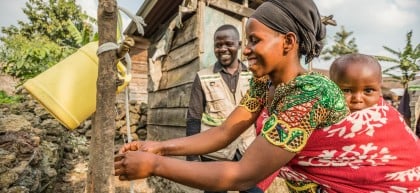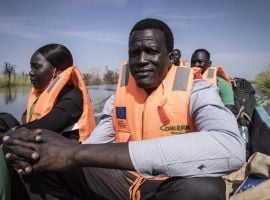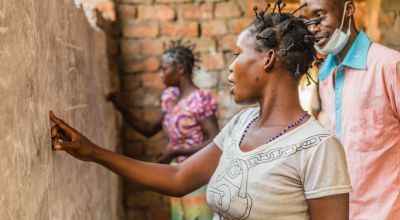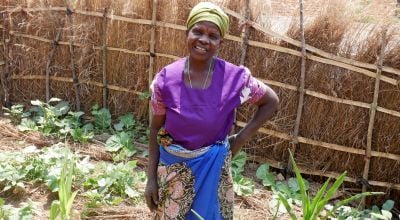
Knowledge Hub
Cyclone Idai: Communities in Mozambique face worse days ahead
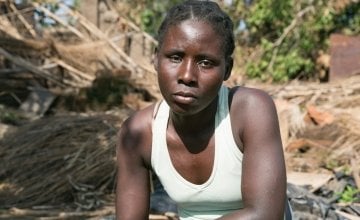
Almost always, when a natural disaster strikes, it’s the poorest that get hit hardest. On the night of 15 March, the poorest communities in Mozambique lay directly in the path of one of the most violent cyclones to hit the Southern Hemisphere in living memory.
A night of terror
“It happened at night — it was horrible,” recalls single mother of four, Teresa Jose Almando. “My house got destroyed… we made our way to higher ground in the darkness. We even had to cross the river, which was frightening.”
Cyclone Idai roared right through the centre of Mozambique, bringing gusts of up to 175 mph and dumping vast amounts of rainfall in just a few short hours, catching many people off guard. Domingas Manual tells us “We checked the outside of the house, because the wind was so heavy, and went back to bed. Then suddenly the roof of our house fell on us.”
The destruction is everywhere. In the coastal city of Beira, it seems like every building is damaged in some way, many with their roofs stripped right off. Large stretches of the N6 highway to Zimbabwe have literally disappeared, washed away by the floods. But it’s in places like Nhamatanda, about 100 kms west of Beira that people suffered most.

Weakest hit
Far off the main roads, across rivers and through bush and mud, are hundreds of small communities that rely completely on the land for everything. Many families live in mud huts with flimsy grass roofing, and few have any form of regular income. This is subsistence living.
Along a bush path, we meet Ernesto Gambulene, dejectedly inspecting his ruined field of maize.
I have been trying to save what I can, but there is almost nothing we can use. I just have to throw it away. I have to support my wife, my mother, my 2 daughters and 5 sons.
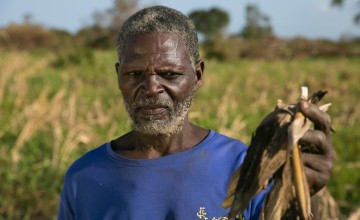
Nearby lie the ruins of his home, and for a few moments we don’t notice the elderly woman sitting on the ground amid the detritus, her leg heavily bandaged and her face betraying a deep trauma.
It’s a heartbreaking sight.
My mother is old and she was hurt when one of the walls of our house fell on her. Her leg was broken and we had to carry her in the dark through the water to the main road, which is on higher ground.
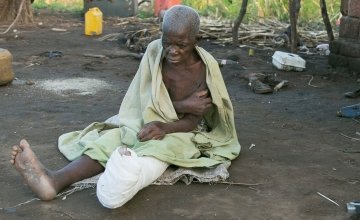
Hungry and angry
Everywhere you go here, there are stories of destruction and survival. These people are tough. But, unfortunately, their troubles are only beginning. The topography, the flooding, and the mud have meant that relief supplies have been slow to reach the isolated communities. People are hungry… and angry. “My family are starving, they are crying,” he says helplessly.
Those who have not yet been able to return to their villages are gathered in makeshift camps, with few facilities. Some, like Teresa, have taken to the roadside as the numbers swelled. “It was not safe for my children,” she says. They are surviving on pieces of rotting corn they salvage from the fields.
This would traditionally be the “hungry season” in Mozambique — a time when last season’s food reserves are running out and the new crop is not yet in. Before Idai arrived, people were already at their weakest — they are very, very vulnerable. Now they are forced to drink dirty river water, because wells were submerged and polluted, and the potential for the spread of water borne diseases like cholera is high.
A real tragedy, but you can help
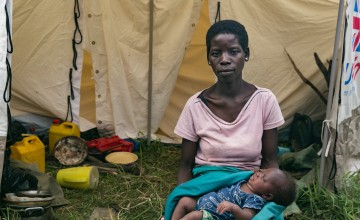
Ironically, this was going to be a good year. The rains, for a change, were consistent and plentiful and the staple crops of maize and sorghum were due to be harvested in a few short weeks. Now it is almost all gone. It’s nothing short of a tragedy.
The people of Mozambique need food, clean water, shelter, and seeds. Concern has been working with partners to assess the areas of greatest need in Nhamatanda, and will soon begin distributions of relief supplies.
Please help by donating what you can.
